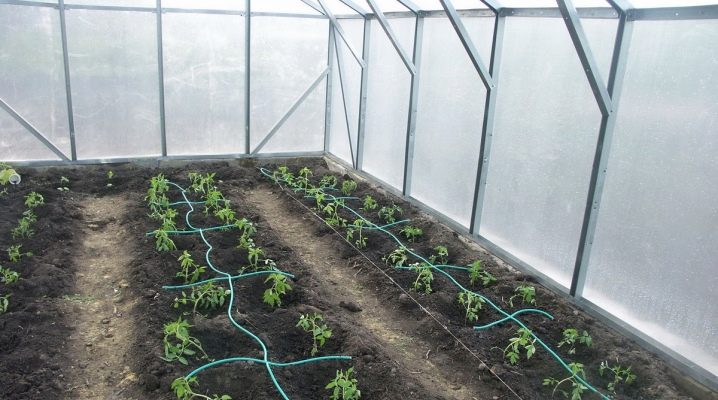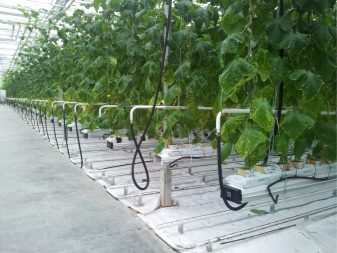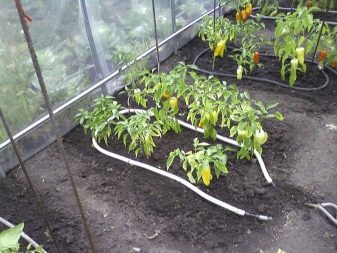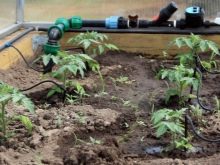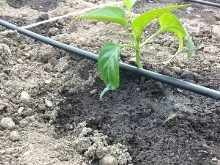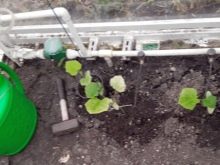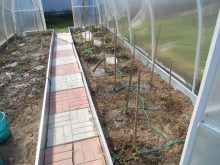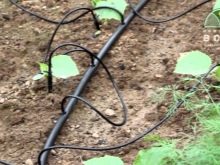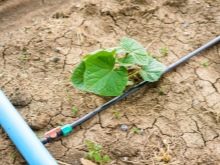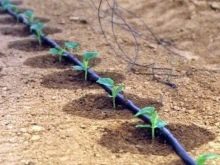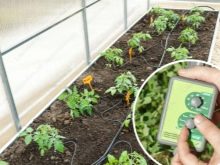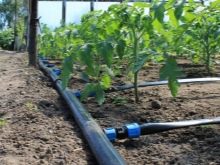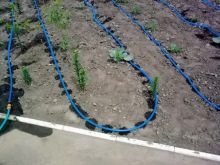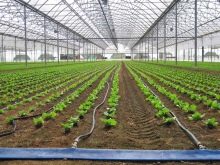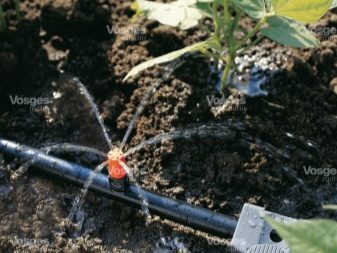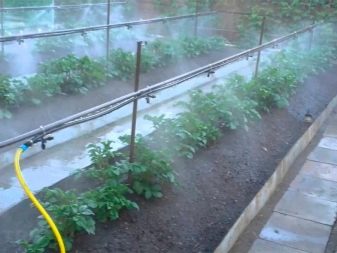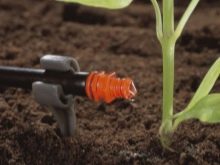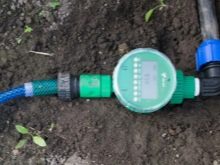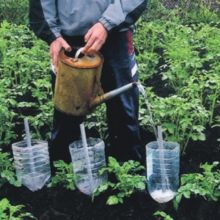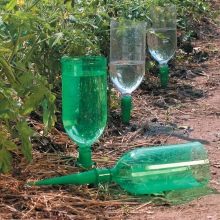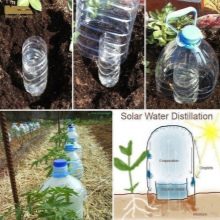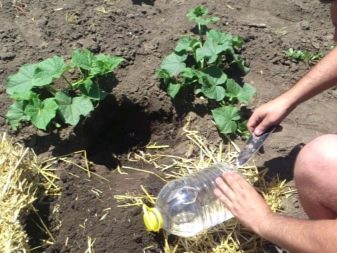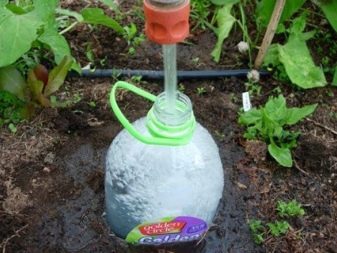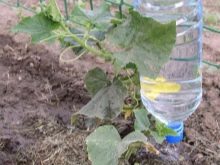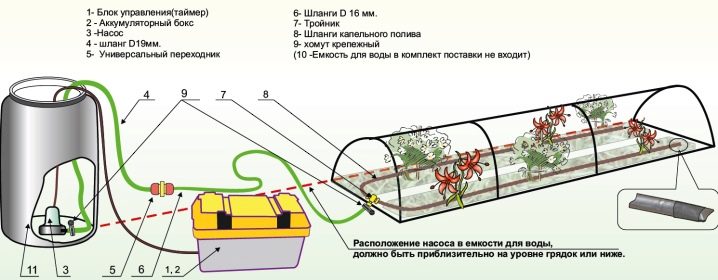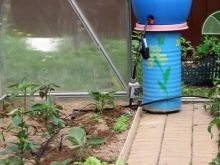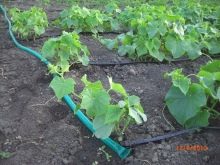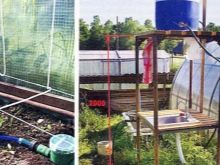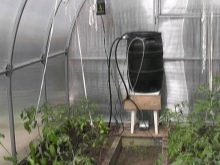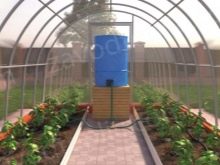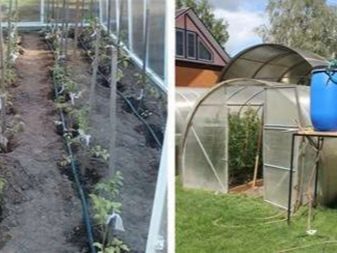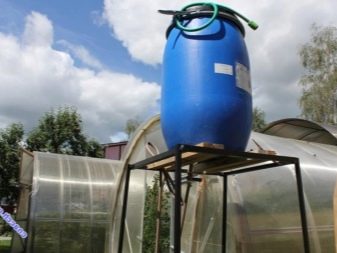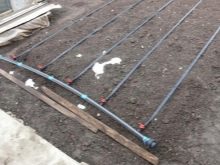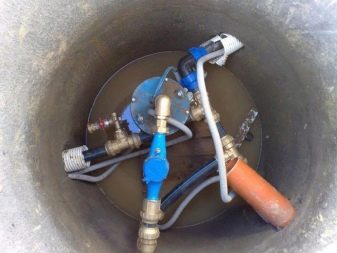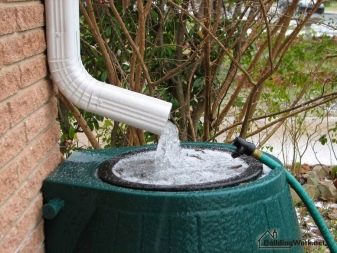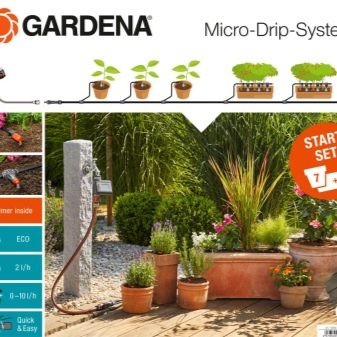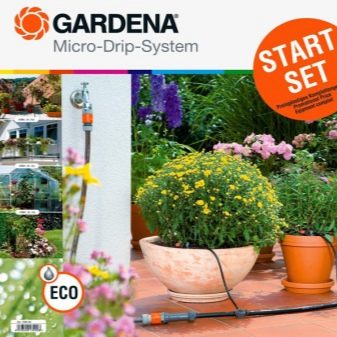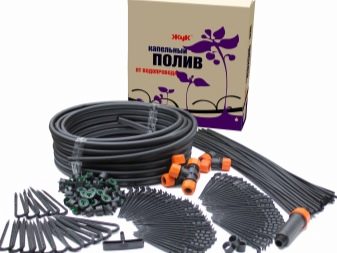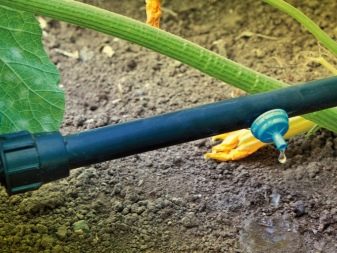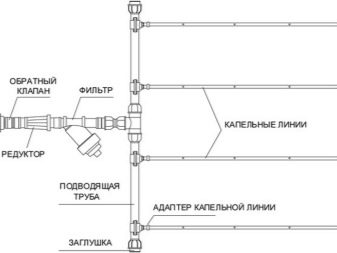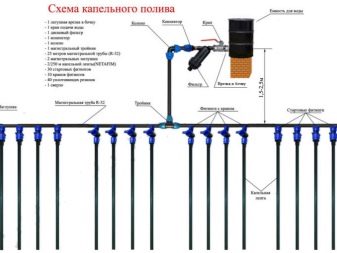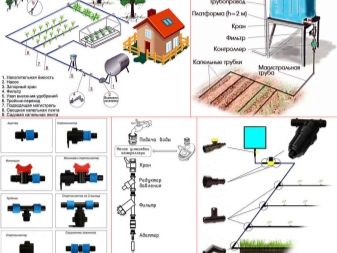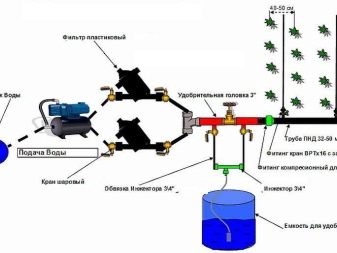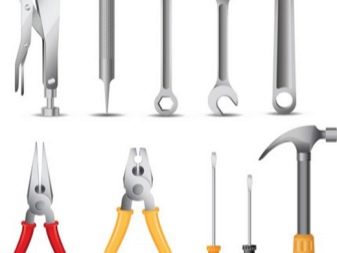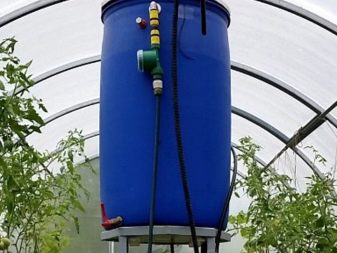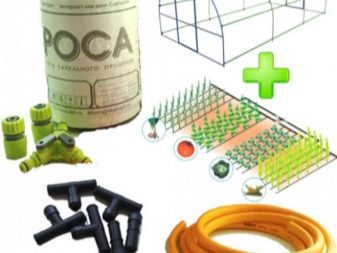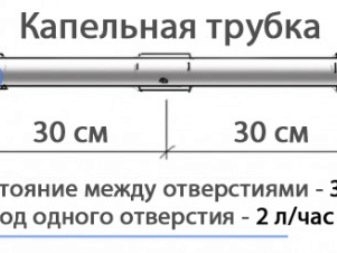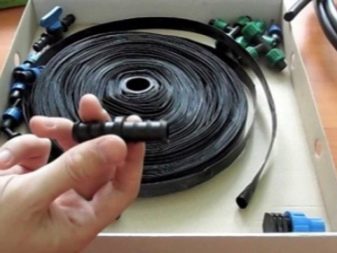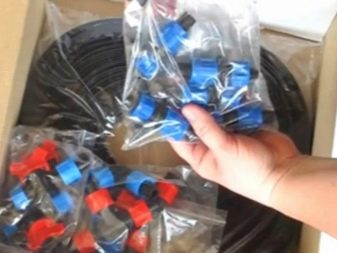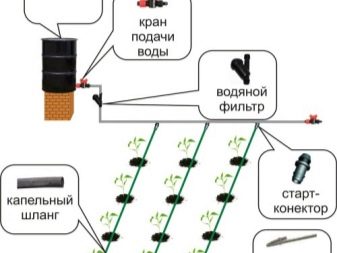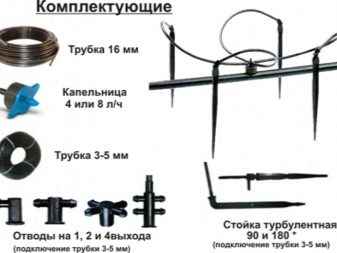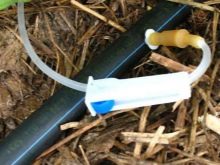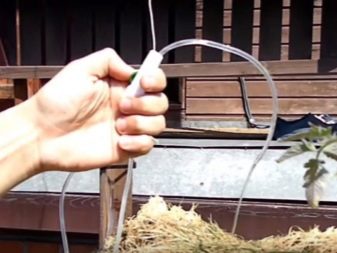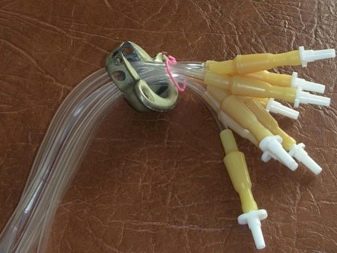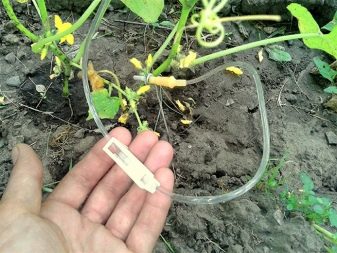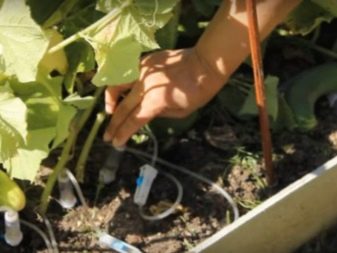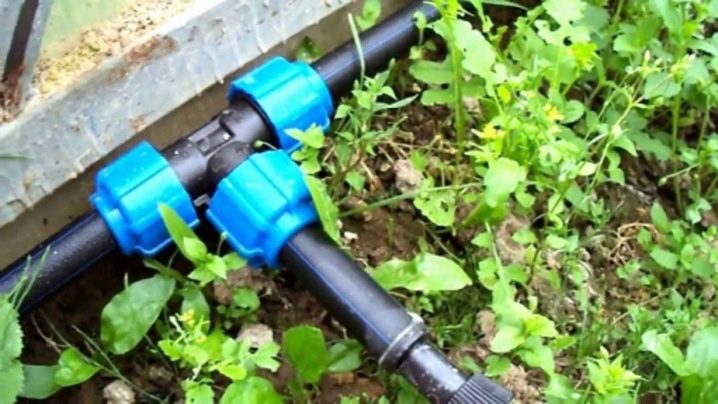Drip irrigation in the greenhouse: the device and the advantages of the system
A greenhouse should be a comfortable and convenient help for solving everyday problems of gardeners and gardeners. This means that it is necessary to carefully consider the irrigation system in it. Moreover, with high-quality drip irrigation it is possible to achieve an optimal result.
Benefits
Installing an automatic irrigation system for greenhouse land is useful if only because it helps reduce the risk of sunburn from plants. Even the most attentive and careful landowners can not always avoid droplets on the leaves and stems. And these drops work like a magnifying glass and are able to overheat a part of a plant. By feeding dosed water to the roots, gardeners eliminate such a threat in principle. Equally important is what happens with water after it is on the ground.
The systematic flow of fluid allows you to soak the entire fertile soil layer abundantly. If, however, watering a greenhouse from a watering can or hose, it will be possible to achieve water infiltration of only 10 cm, even when it seems that there are no dry places left outside. Thanks to drip irrigation, it is possible to supply water and nutritional mixtures as accurately as possible, taking into account the characteristics of individual species and varieties. Eliminates the appearance of puddles and wet lanes.
An important feature of drip irrigation is that it helps to save on used fertilizers. Since seedlings will die less often, it will also reduce costs. For your information: the flow of water directly to the roots of crops makes it possible to hinder the development of weeds and useless plants that accidentally fall into the greenhouse. The root system with drip irrigation increases the ability of plants to get nutrients from the earth. Gardeners will be able to leave planting without attention for a certain time, not caring about their safety, and the danger of leaf diseases in cucumbers disappears.
Types of autowatering: features
Doubt that drip irrigation is useful, not necessary.But you can organize it in various ways and it is important to know the nuances of each technique. Special systems manufactured in factories and plants are quite expensive, and it can be difficult to organize their work in a particular area. But there are much simpler solutions: drip irrigation is perfectly organized with its own hands through the use of droppers. With this method, you can get water from wells, wells and even tanks of suitable capacity. But the connection to open water in this case is categorically unacceptable.
Droppers are divided into two types: in some, the flow of fluid is regulated, while in others it is set initially. Compensation devices are considered more efficient than non-compensated ones. The "tape" version is considered relatively simple, it uses a watering tape that contains many holes. As soon as water gets into the hose, it begins to flow to the plants.
There are serious drawbacks:
- it is impossible to change the intensity of the water supply (it is strictly determined by the pressure);
- it will not be possible to selectively water a separate territory;
- some insects can damage relatively thin walls;
- even a non-attacked medvedka tape will last a maximum of three years.
Most often, gardeners and gardeners choose systems that contain a hydraulic valve. A special controller sets the program, and the most advanced devices are able to work at strictly certain hours, set one month before the appointed date. Any summer residents will be able to operate such equipment; this does not require solid knowledge of technology. But here not everyone is able to mount drip irrigation with a hydraulic valve. You can simplify the work if you briefly familiarize yourself with similar watering systems for industrial use.
Automate drip irrigation can be in other ways. Often, sprinklers are used for this purpose, the sprinkling radius of which is 8-20 m, depending on the model and conditions of its operation and on the operating mode. A polypropylene pipe is used to supply water, but occasionally it is replaced with a leaf-type hose. A good alternative is drum irrigation systems, widely used in small and medium-sized agricultural enterprises.The water is immediately sprayed on tens of square meters. The only problem is that it should be taken only in the reservoir and that for a single country house farm such a decision is too expensive.
There is also micro-sprinkling - this method is used both in large areas and in small vegetable gardens. All you need to do is a flexible perforated hose connected to a stable water source. There are no special differences from the drip tape. Paying attention to the characteristics of each option, carefully calculating the necessary parameters, you can get a favorable ratio between water consumption and the resulting crop. This is not always the case from the first time, but the experience of thousands of owners shows that quality drip irrigation is within the reach of everyone.
System device
It is possible to irrigate the land in the greenhouse using the drip irrigation method with the use of available tools. The simplest among them is the use of plastic bottles, of which the liquid will flow directly into the ground at the root. If you accumulate a sufficient number of containers (and they will be accumulated along the way), the cost of materials can be reduced to zero.An important disadvantage is that this watering can not be 100% automatic. You still have to fill each tank with water every few days.
Regardless of the method of organization, the water must have the same temperature as the ambient air. Only under this condition can the risk of overcooling of plants be reduced to zero. Since the pressure in the rural and suburban water pipes often changes, it is advisable to use a gearbox to extend the service life of pipelines and tapes. The type of water source can be anything, and you still need to use a filter to avoid distortion of the following parts of the system. With the help of solenoid valves it is possible to control the flow of fluid and its shutdown.
The advantage of this solution is the ability to coordinate crane operation with signals.coming from timers or controllers over cable channels. It is often recommended to install sensors with electronics that can recognize weather conditions and adjust drip irrigation regimes accordingly. The supply line is made of pipes - steel, polymer or metal-plastic.Some experts believe that those systems work better in which there is also a container with liquid fertilizer.
It should be noted that irrigation in a semi-automatic mode on the basis of plastic bottles is organized very easily and simply. It is recommended to use containers of 1-2 liters, which allow supplying plants with water for up to three days; smaller sizes do not justify themselves, and larger bottles take up too much space. Important: before packing the container it is required to remove all labels and stickers from it, they may contain substances hazardous to health. With the help of scissors, the bottoms of the bottles are cut off by approximately 50 mm.
Holes in the lids are made very easily, for this you need only metal objects repent on fire - awl, needle, thin nail. Varying the number of holes and their size, you can change the intensity of watering the plant. Of course, the more hygrophilous culture is grown in a particular place, the more water must flow. From the inside they put a little gauze in the lid so that it retains the dirt and does not allow the holes to get clogged; cotton cloth can replace cotton cloth or nylon.Near the plant or the place of its future disembarkation they dig a recess, the diameter of which corresponds to the diameter of the bottle, and the depth does not exceed 150 mm.
As you can easily see from this description, any gardener will be able to correctly and quickly mount a bottle semi-automatic watering complex. To reduce the risk of clogging of the holes, you can put the bottles in your throat upwards, making holes in the bottom. And still it is possible to put caps for which the container of 5 l is applied. The simplest solution, which at the same time simplifies the filling of the bottles, is to connect to each of them the branches from the garden hose. In case of difficulty in choosing, it is worth consulting with experts.
Calculation of the volume of water
It is difficult to call agronomy an exact science, but still approximate calculations of the greenhouse's water requirements can also be calculated by the gardener himself, without resorting to outside help. The chosen planting pattern is necessarily taken into account, which can greatly affect the actual level of water evaporation by plants. The consumption of each unit of drip irrigation must strictly correspond to the total throughput of the pipelines connected to it. The area occupied by each culture is always rounded up.This is especially important if you use a homemade micro-droplet irrigation complex, because the work of enthusiasts is rarely as effective as the actions of trained engineers.
When it is impossible to place the number of blocks provided for by calculations (for technical or economic reasons), it is necessary to make more of its fragments, and to reduce the specific power of one block.
The conduction of the main pipeline through the irrigation segment can occur:
- in the middle;
- in the middle with a shift;
- on the outer border.
Most professionals believe that the most profitable scheme is the placement in the middle part of the irrigation unit, with the pipes being removed from both sides, since the pipeline is expensive. By calculating the diameter of the pipe that will allow you to supply the right amount of water, if necessary, it is rounded to the nearest standardized value. If the flow of liquid comes from the reservoir, its capacity is calculated with such a condition that when filling is 100% enough for one daily irrigation cycle. It usually ranges from 15 to 18 hours, depending on how long the hottest hours last.The obtained figures must also be compared with the pressure that the water supply system is able to provide.
Automation: Pros and Cons
There is no doubt that drip irrigation is necessary and that it is relatively easy to organize it. But there is one subtlety - the automation of such irrigation has not only positive sides. Many people tend to create an automatic complex as soon as possible, because they are tired of walking with watering cans and hoses and do not think about possible problems. Much has already been said about the positive properties of automation, but they are all weakened by one important circumstance - such systems work well only with a steady flow of fluid. In addition, each additional component increases the cost of creating a watering system and increases the risk that something will go wrong.
Water supply: options
Barrel is not only one of the options for obtaining water for drip irrigation. She will definitely need to supplement systems that receive fluid from a water supply system or artesian well. Indeed, in both cases, purely technical interruptions are possible, and then the water supply will be an extremely valuable resource.Where there is no central water supply, it is recommended to place the container at a height of approximately 2 m. To reduce evaporation and prevent the development of algae, it is required to protect the barrel from direct sunlight.
From the tank or other structures (even the standpipe) lay pipes or pull hoses. Most people simply leave them on the ground, although sometimes it is necessary to hang on supports or lay in the soil. Important: pipelines going underground should be relatively thick, and those placed on the surface of the earth should be made only from opaque materials to prevent water from blooming. In the absence of central water supply or instability of his work, one must choose between a well and an artesian well.
Well will have to dig, spending a lot of time and effort. If there is a reservoir nearby, it may well be used for watering the greenhouse and open beds, but you will need to get official permission from the owners of the water area or supervisory authorities. A practical step for regularly used summer cottages is the use of tanks, where water is collected from drainage systems or septic tanks.A serious disadvantage is that the performance of such water supply is small, and it is often necessary to fill the gap by causing tankers (which is very expensive). It is not recommended to water anything with water flowing from the roof - and this rule is valid not only for drip irrigation.
Ready kits
To simplify your work and not spend too much time on setting up a drip irrigation system, you can choose one of the ready-made sets of irrigation systems. As the practice of gardeners shows, most of these devices work relatively well, while maintaining stability over time.
A striking example of a decent solution, managed with the help of timers, is a micro-drop watering of the brand. Gardena. Such devices will help reduce water consumption by up to 70% (compared to simply using hoses). The connection is thought out in such a way that even children can create an extended circuit.
The base module contains three containers (each with its own lid), a pallet and a dozen clips (in the standard) or 6 clips (in the corner) version. You can order components that facilitate watering potted plants.In addition to Gardena, there are other fully finished complexes, each of which has its own characteristics.
"Beetle"collected in Kovrov, irrigates 30 or 60 plants (depending on the modification). You can connect the device to the water supply or to the tank, in some versions there is a timer. The “Beetle” droppers are made to block the possibility of contamination. The package must include a filter.
"Waterman"made by famous company "Will"specializing in the production of greenhouses, fully complies with the conditions of their irrigation. The standard version includes everything that is needed for drip irrigation in a greenhouse 4 m long with a pair of beds. The system contains an automatic controller, and if necessary, you can always purchase a section for an additional 2 m of bed; serious weakness - unsuitable for connection to the water supply.
"Signor Tomato" - This is one of the most expensive irrigation solutions on the Russian market. But the board is fully justified, because the system includes not only the controller, but also the autonomous power supply system of the automation due to the solar battery.To install such a kit, you do not need to raise the container and attach a crane to it. The initial delivery already includes a submersible pump capable of pulling water out of the barrel. The length of the circuit varies from 24 to 100 m.
Making your own hands
With all the advantages of ready-made kits, a large number of people are trying to irrigate themselves. This allows not only to save considerable money, but also to adjust the created system as accurately as possible to fit your needs and requirements.
Scheme and Markup
The first condition for success is the formation of a competent and rational scheme. If planning is erroneous, one may encounter water overuse and premature equipment failure. And even when factory irrigation complexes will be installed on the site, you need to carefully approach this point.
On the map display:
- properties of the greenhouse and its exact location;
- location of the water source;
- contours of the water supply system connecting them.
It is impossible to make a clear outline if there is no detailed plan for the irrigated land.; even the topographic map already has insufficient detail.All objects that can affect the trajectory of the system and its work should be taken into account: differences in relief, sheds and other outbuildings, planted trees, fences, residential building, gates, and so on. Greenhouses can grow a variety of crops, including perennial, so you need to take into account their features. Watering vegetables is organized differently, depending on the planting technique and its plan, on the size of the rows, on the number and height of the rows, of the areas occupied by them. As for the sources of water supply, it is not enough to note their location and appearance, a good scheme always includes other important information.
So, when it is planned to take water from a river, lake, stream or spring, it is necessary to reflect the exact distance from the greenhouse to such sources. When connected to the water supply, they describe the working pressure and the mode of its action. In the case of wells, it is very useful to know the daily and hourly debits, the duration of drilling, the equipment of the pump, the diameter, and so on. It is necessary to think about what circumstances are important in a particular case and not to forget to include them in the created scheme. All these parameters are analyzed when choosing the optimal type of system and ordering parts for it.
Tools and accessories
The organization of drip irrigation is impossible without earthworks. Therefore, the necessary distances are measured by a tape measure, and a shovel will become the constant companion of the gardener for the next few days. The installation of the system itself is carried out using screwdrivers and pliers, and a set of keys will probably also be required. The reserve or main barrel for irrigation must have a capacity of at least 200 liters, because only such a volume is really a guarantee against surprises. When water is pumped from a well, the pump is required; You can also extract it from the well manually, but you need to carefully consider whether it is worth the extra effort on the motor.
The simplest drip irrigation system in the true sense of the word is formed from:
- plastic water pipe with a diameter of about 5 cm;
- fittings;
- filter;
- drip tape.
The filter system is connected to a hose leading from the barrel or from the water supply. Its other end is displayed on the pipe, which dilutes the water along the section or along the greenhouse itself. In addition to these components, be sure to require brackets, screws, scissors for cutting pipes. If the system is made independently from the scrap components,You will need to use a connector, nozzles, hospital droppers, drip tape, various pipes and taps to switch. It is desirable that the parts are plastic, because PVC is not prone to corrosion, unlike metal.
Not every type of sanitary equipment is recommended for drip irrigation. So, the fitting is necessarily needed only from primary polyethylene. Its production has strict official standards and quality control is carried out. But the secondary polyethylene (recycled) by each enterprise is produced in accordance with the technical specifications, and even the implementation of these norms is guaranteed only in the word of the manufacturer. And even the best samples are not protected from the action of ultraviolet rays and other harmful environmental factors.
The fact that the fitting is made of recycled polyethylene is most often indicated by cavities; they can also say that the standard technology is grossly violated in the production. There must be a strictly right angle between the ends and the axles, the slightest deviation from it indicates the low quality of the product and its unreliability.Mini-starters with a diameter of 6 mm are needed to connect droplet tapes of standard size. When using them, there is no need for reinforced sealing.
Starters with threaded connections will help to connect the drip system and the thread at the ends of the main pipelines. When polyethylene or polypropylene pipes with thickened walls are used on the site, it is necessary to use starters with a rubber seal. In the greenhouse, designed for year-round use, the irrigation system is made stationary. And because they use several other components that are more expensive (but also surpass the available analogues in terms of functional qualities).
Adjustable droppers are mounted on the plastic pipe, and the clamping nut helps to vary the tightness. The top cap helps to set the amount of droplets and water flow. The compensation type of adjustable droppers is needed if there is a large slope in the greenhouse. Thanks to him, even pressure drops in the line will not change the stability of the water supply. Starting cranes are equipped with clamps, through which the connection becomes as tight as possible.
A drip tape is attached to the opposite end of the starting tap. If the thread is made inside, the valve is cut into the pipeline, and the tapes are connected using this thread. It remains to deal with the ribbons themselves and with the requirements placed on them, because very much depends on the properties of this element. Even if all other parts of the drip system are chosen and installed correctly, but the watering itself is upset, any expenditure of money and effort will be useless.
The lightest and thinnest tape is taken when you need to water the vegetables with a short growing season. The longer the period of maturation of the irrigated crop, the higher the strength of the walls must be (and with it their thickness). For ordinary gardens and greenhouses, 0.2 mm is enough, and on rocky soils, a value of 0.25 mm is recommended. When watering holes are located 10–20 cm apart, the tape should be used for crops with dense planting, for sandy soils, or for plants actively consuming water.
On ordinary soils with an average fraction size, the optimal value is 0.3 m. But 40 cm is required when plants are planted sparse or you need to create a long watering line.Universal value for water consumption is 1 l per hour. This indicator will satisfy the needs of almost every crop and almost does not depend on the soil. Important: if you reduce the flow to 0.6 liters in 60 minutes, you can create a very long watering line; The same value is recommended for soils with a low rate of water absorption.
Procedure
The pipes are placed along the edges of the beds, making holes in them for the future connection of the drip tape. The intervals between such holes are determined by what the width of the beds and the spacing, as well as the passages in the greenhouse. It is important to organize all the work so that the holes on the pipe are marked in a single plane. As soon as the marking is completed, the plastic is initially drilled with a thin drill, then additionally covered with a thick feather. Important: you can not drill the bottom wall through.
It is required to take larger drills smaller in diameter than a rubber seal.This will avoid chaotic water leakage. Some masters believe that according to the technology it is necessary to set the pipe drilled at the proper points horizontally and shake. Then the plastic chips will be removed from the inside.Each hole is cleaned with sandpaper and rubber seals are inserted into it (they are inserted tightly to avoid leaks). After that, you can begin to install watering systems in the greenhouse or in the garden.
Water pipes are connected by couplings, which are screwed valves. This is the only way to ensure sufficient pressure and concentrate the water supply to a certain area. The edges of the pipes are equipped with plugs. If you want to save money, simply put round chumps, tightly fitted to the diameter. After laying the pipeline, you can attach fittings, both ordinary and supplemented with cranes. The role of a fitting with a crane is to cut off the water supply to a strictly defined bed.
When this is done, you need to equip a greenhouse with drip tape. The holes in it are located every 100-150 mm, the exact distance depends on the manufacturer's policy. All work is reduced to the layout of the tape on the territory and attach it to the fittings. The far edge of the tape is sealed to avoid spilling water. For your information: it is advisable to plan the consumption of equipment and materials by 15% more than envisaged by calculations.In reality, various errors and omissions, and even manufacturing defects, are absolutely inevitable.
How to make drip watering with your own hands, see the next video.
